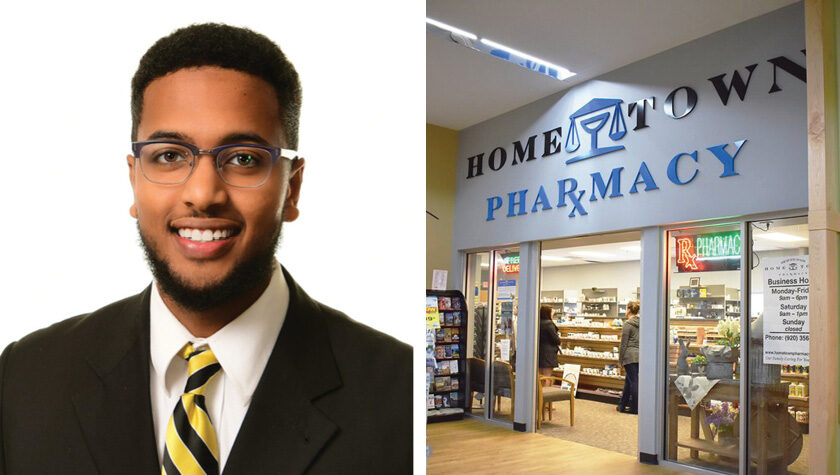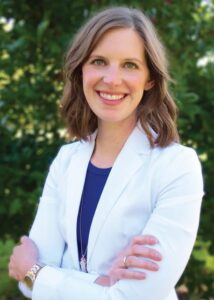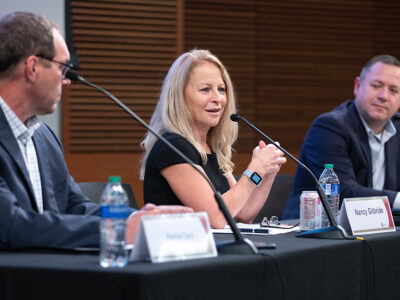
8
December

Community Pharmacy resident Ahamed Ahamed evaluates impact of medication synchronization on pharmacist workflow
By Katie Ginder-Vogel
Medication synchronization programs, which orchestrate prescription refills to all fall on the same day, have a litany of benefits to patients, such as reduced trips to the pharmacy and ultimately increased adherence — and with higher adherence comes better health outcomes. The impact of med sync has been well-studied from the patient perspective. But what about the pharmacy?
There’s a dearth of objective data on med sync programs and how they impact pharmacy workflow and pharmacists, says recent University of Wisconsin–Madison School of Pharmacy community pharmacy resident Ahamed Ahamed. Having objective measures may help increase mass adoption of these programs, so he set out to gather it.
“We know the benefits for health-related outcomes for patients, so the purpose of my community residency project is to see what the benefits are for workflow and pharmacy standpoint, to get more buy-in for med sync programs,” says Ahamed.
His project is evaluating the impact of medication synchronization protocols on Hometown Pharmacy Pardeeville. Ahamed’s residency placement is at Hometown Pharmacy in Beaver Dam, owned by pharmacist Abbi Linde (PharmD ’11), Ahamed’s project mentor.
“There is this common promise we hear from pharmacies that have implemented med sync that at 40 percent sync levels, the phone stops ringing, and you become more efficient at taking care of your patients,” Linde says. “This project is seeing if there is truth behind that promise.”
Implementing med sync
Before and after the implementation of the medication synchronization program, Ahamed spent time observing the workflow at Hometown Pharmacy in Beaver Dam and in Pardeeville.
Throughout his project, Ahamed is collecting data on the number of phone calls to the pharmacy and the reason for each call, the number of patients waiting in the pharmacy for refill on a chronic medication, and the number of times the pharmacy finds itself with an inadequate stock of medications required to treat a chronic condition.
“Inadequate stock can make it hard for patients to get medications on time,” says Ahamed. “When you enroll patients in med sync, you try to prep their meds a week in advance, because you know they’re due on a certain date, so you can proactively make sure the inventory is up to date.”
“So far it does appear that med sync benefits pharmacy workflow. The staff perception is that it’s much easier for patients to pick up everything on the same day.”
—Ahamed Ahamed
Both pharmacies are using the pharmacy solutions software platform ENGAGE to sync patients’ medications. Ahamed is working with a pharmacy technician at the Pardeeville location, as well as pharmacist and store manager Jim Butcher, to observe the med sync program.
To be eligible for med sync, patients had to be taking three or more medications, with two or more pickup dates. For patients who decided not to participate, Ahamed tracked reasons for not enrolling, which included a wish to keep things the way they were, a concern that picking up all medications on one day would be too expensive, and a patient who had been displeased with a previous med sync experience.
Ahamed is gathering time stamps to evaluate any changes in workflow efficiency. He’s measuring the amount of time it takes to fill a prescription with and without med sync, as well as the number of people enrolled, the amount of time pharmacists spend on clinical services, and the number of phone calls to the pharmacy for refill requests. He also plans to collect information on patient and pharmacist satisfaction with the program.
To ensure the data behind this research is robust, Ahamed worked with some unlikely collaborators: four industrial engineering students.
“I was digging into the literature during my background research and reading about workflow efficiency techniques like Six Sigma that I didn’t have in my training, and I decided I needed to reach out to someone more in tune with that,” Ahamed explains.
Ahamed reached out to Raj Veeramani, professor of engineering at UW–Madison, who studies supply chain management and optimization in the UW Department of Industrial and Systems Engineering. Veeramani assigned four students to the project for the spring 2020 semester, as part of their senior design project. The engineering students helped with data collection protocol and created aggregate models to look at financial and time saving potential overtime utilizing mathematical models.
“They were able to input certain values during our data collection, such as time to fill a prescription, time to check a prescription, etc., to see what would happen if certain med sync milestones were reached,” says Ahamed.
Optimistic preliminary data
Because the med sync process takes time, many participating patients are still working toward a single pickup date, so the data collection is ongoing. Mid-point results were promising, however, showing a decrease in the number of phone calls to the pharmacy, fewer patients waiting in line to pick up medication, and fewer instances of inadequate stock that resulted in delayed prescription pickup.

“So far it does appear that med sync benefits pharmacy workflow,” he says. “The staff perception is that it’s much easier for patients to pick up everything on the same day.”
Linde says her experience supports that finding.
“During COVID-19, the pharmacy has been a little chaotic,” says Linde. “At first, everybody wanted to fill 90 days of their medications early, and then we had a low, as people didn’t want to leave their houses. Med sync allowed us to stabilize some of the tasks in the pharmacy and have more control over the workflow of our pharmacy during these rapidly changing times.”
Even with final data pending, Ahamed can already see that med sync is easing stress on pharmacy staff. They have full information on active daily prescriptions. Pharmacy techs have enough details to handle the entire prescription. The prescriptions coming in aren’t random each day. Every 30- or 90-day prescription one patient has can be completely filled and ready, all at once.
Several patients have also positively responded to the program.
“It’s so much easier having to come to the pharmacy once for all of my medications than having to come multiple times,” one patient told Ahamed.
“I used to always look into my bottle to see how many pills I had left,” said another patient. “Now I don’t have to worry about that anymore.”
Professor Dave Mott (BS ’88, MS ’92, PhD ’95), William S. Apple Distinguished Chair and chair of the School’s Social and Administrative Sciences Division, who mentors Ahamed, says he appreciates Ahamed’s approach to the project.
“A lot of what’s been done is evaluating the outcomes of med sync from the patient perspective, and he was trying to figure it out from a pharmacy workflow resource perspective — how it should be set up and the most efficient, effective way to implement it,” says Mott. “He and Abbi did a great job with that, in terms of thinking of the idea and addressing questions that really haven’t been tackled yet.”
Next steps
He is distilling his data into a manuscript to publish, so other pharmacists can consider his findings for their own med sync implementation.
“The best part is that I get to stay on full-time at Hometown Pharmacy Beaver Dam,” Ahamed says. “I have the privilege to continue here.”
“I truly believe that sooner, rather than later, pharmacists will be classified by the state as providers.”
—Ahamed Ahamed
Linde hired him as the store manager, and he’ll be mentoring the next community pharmacy resident from the UW–Madison School of Pharmacy.
He advises current students and residents to try to find the perfect preceptor or mentor, as he feels he did. When he first met with Linde, he told her about his interest in chronic care management, and she told him that’s what she wanted to expand on.
Eventually, Ahamed hopes to open his own independent pharmacy, ideally focused on offering clinical services with an appointment-based model.
And he hopes to impact pharmacy around the state, considering himself an advocate for community pharmacists.
“The UW–Madison School of Pharmacy is in tune with the policy aspects of pharmacy. Since I started the residency, I’ve been able to go to the Capitol and sit before the Wisconsin State Senate and Assembly, which is always beneficial. I truly believe that sooner, rather than later, pharmacists will be classified by the state as providers.”







